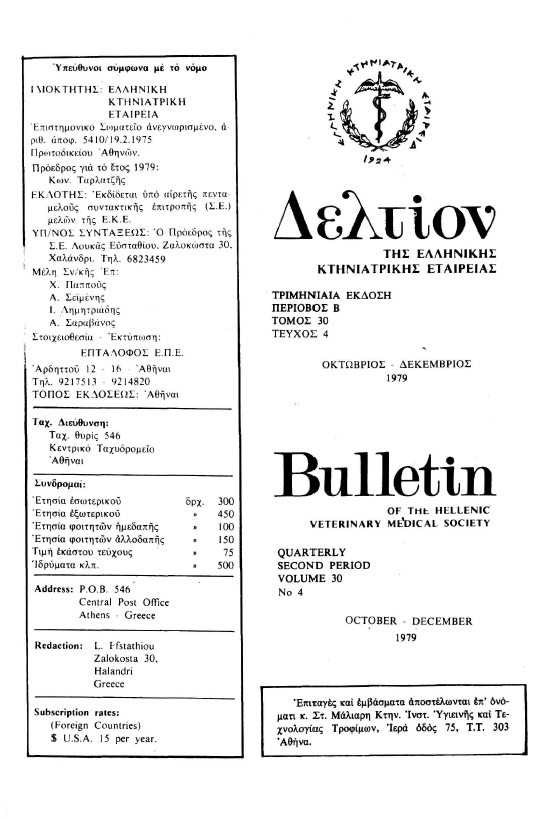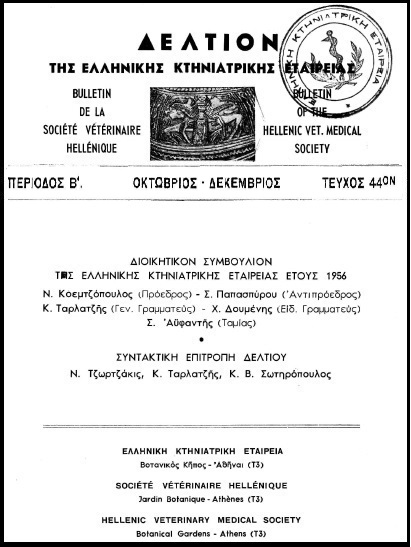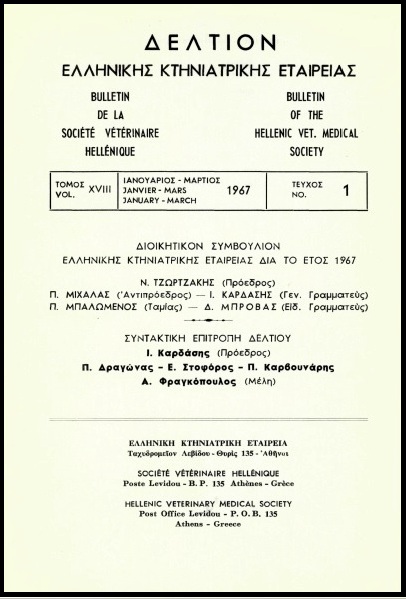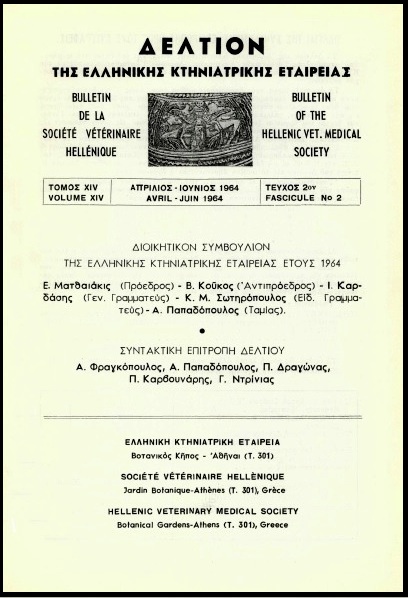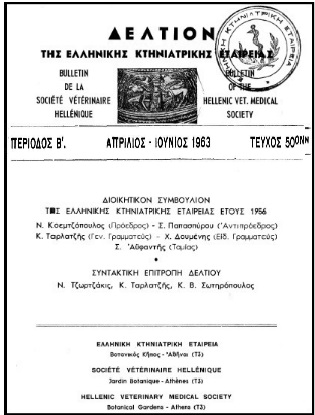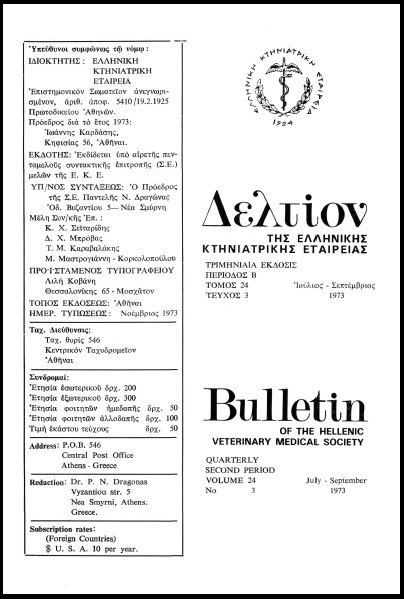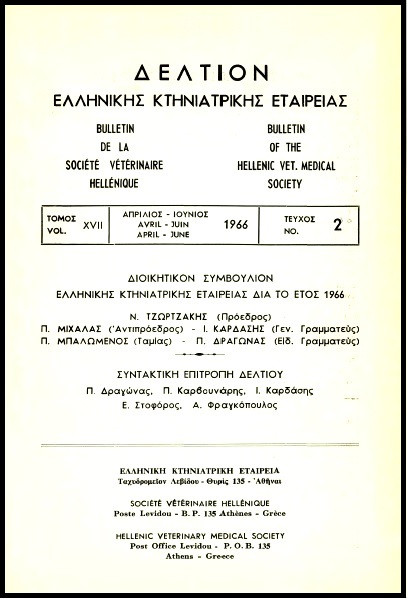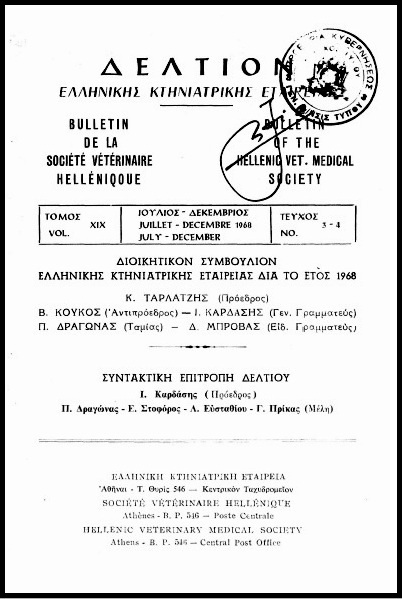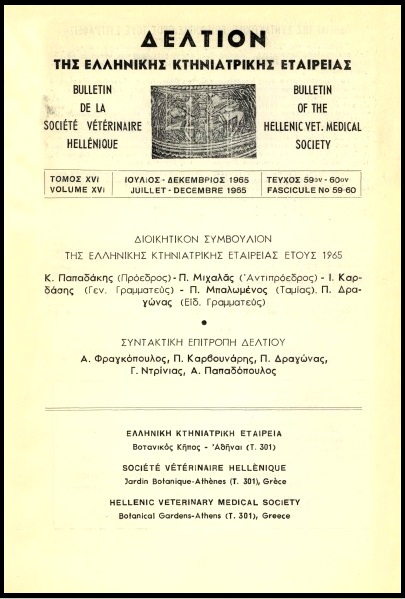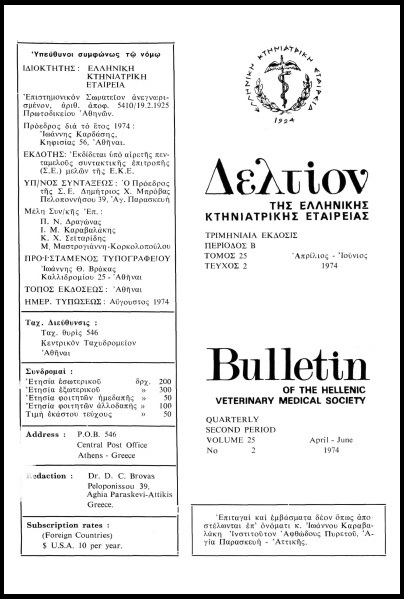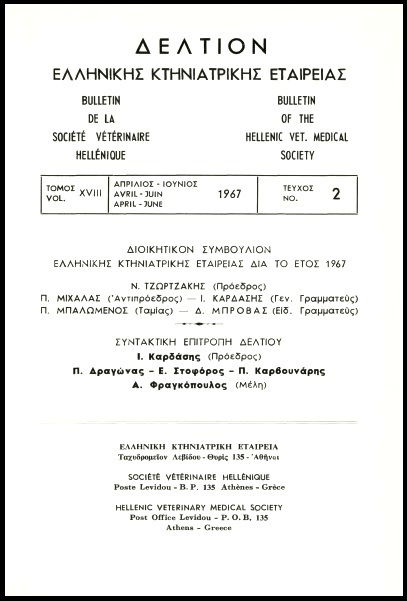A case of swine vesicular disease in Greece
Abstract
In July 1979 a very mild contagious disease was observed in pigs showing lameness and ulcerations on feet and mainly in the region of heels without lesions in the mouth or the snout. The disease affected mainly animals 25 days to 5 months old in a herd of 500 pigs in Aspropyrgos Commune (Attica). These animals were fed with waste food. A sample of foot lesions scrapings from ill pigs of the breeding was inoculated in IB RS-2 cell cultures and in 1-2 days newborn mice intraperitoneal!ν. A cytopathic and lethal for mice virus was isolated. Repeated complement fixation tests gave negative results for Foot - and - Mouth Disease. This virus is cytopathic in pig cell lines (IB-RS-2, PKI5) but not in primary cell cultures from calf embryo kidneys. It is resistant to 50°C/60' in presence or not of 1 M MgCl3 ions, to pH values 3-5-9, to ether, chloroform and trypsin treatment. The virus grown on IB-RS-2 cells has been shown to be Swine Vesicular Disease virus by using the complement fixation and serum neutralization tests (Hyperimmune guinea pig serum UKG/27/72 received from Ptrbright). The disease was reproduced by infection of the isolated virus in one pig and in another one in contact with it. High titres of neutralizing antibodies against this virus were detected in sera of convalescent animals. The diagnosis has been confirmed by the Animal Virus Resarch Institute at Pirbright. This is the first case of Swine Vesicular Disease observed in Greece.
Article Details
- How to Cite
-
ΔΗΜΗΤΡΙΑΔΗΣ Ι., ΠΑΠΠΟΥΣ Χ., & ΜΠΡΟΒΑΣ Δ. (2019). A case of swine vesicular disease in Greece. Journal of the Hellenic Veterinary Medical Society, 30(4), 265–276. https://doi.org/10.12681/jhvms.21421
- Issue
- Vol. 30 No. 4 (1979)
- Section
- Articles

This work is licensed under a Creative Commons Attribution-NonCommercial 4.0 International License.
Authors who publish with this journal agree to the following terms:
· Authors retain copyright and grant the journal right of first publication with the work simultaneously licensed under a Creative Commons Attribution Non-Commercial License that allows others to share the work with an acknowledgement of the work's authorship and initial publication in this journal.
· Authors are able to enter into separate, additional contractual arrangements for the non-exclusive distribution of the journal's published version of the work (e.g. post it to an institutional repository or publish it in a book), with an acknowledgement of its initial publication in this journal.
· Authors are permitted and encouraged to post their work online (preferably in institutional repositories or on their website) prior to and during the submission process, as it can lead to productive exchanges, as well as earlier and greater citation of published work.

